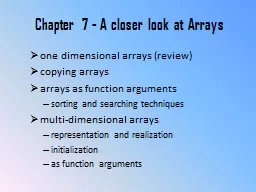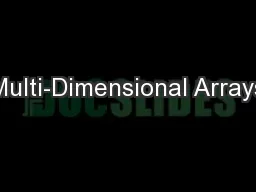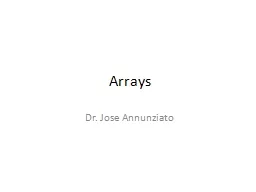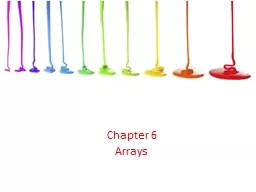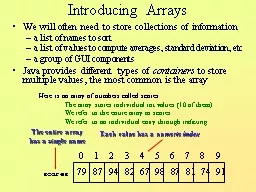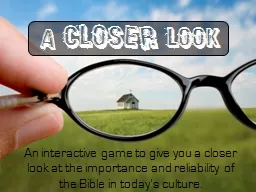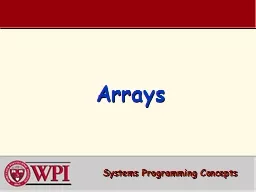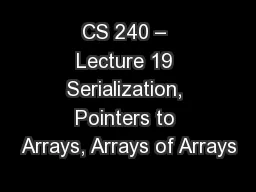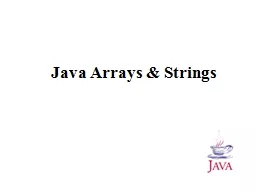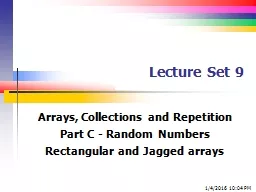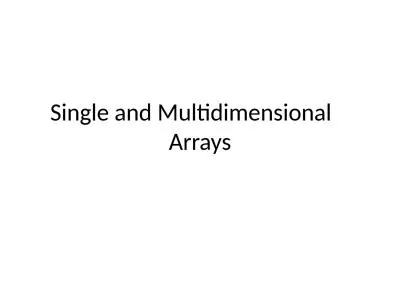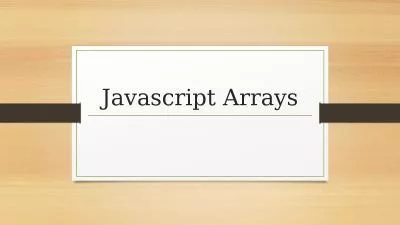PPT-Chapter 7 - A closer look at Arrays
Author : robaut | Published Date : 2020-06-23
one dimensional arrays review copying arrays arrays as function arguments sorting and searching techniques multidimensional arrays representation and realization
Presentation Embed Code
Download Presentation
Download Presentation The PPT/PDF document "Chapter 7 - A closer look at Arrays" is the property of its rightful owner. Permission is granted to download and print the materials on this website for personal, non-commercial use only, and to display it on your personal computer provided you do not modify the materials and that you retain all copyright notices contained in the materials. By downloading content from our website, you accept the terms of this agreement.
Chapter 7 - A closer look at Arrays: Transcript
Download Rules Of Document
"Chapter 7 - A closer look at Arrays"The content belongs to its owner. You may download and print it for personal use, without modification, and keep all copyright notices. By downloading, you agree to these terms.
Related Documents

